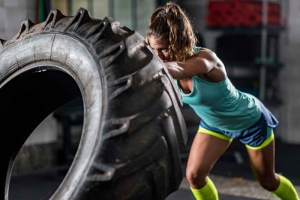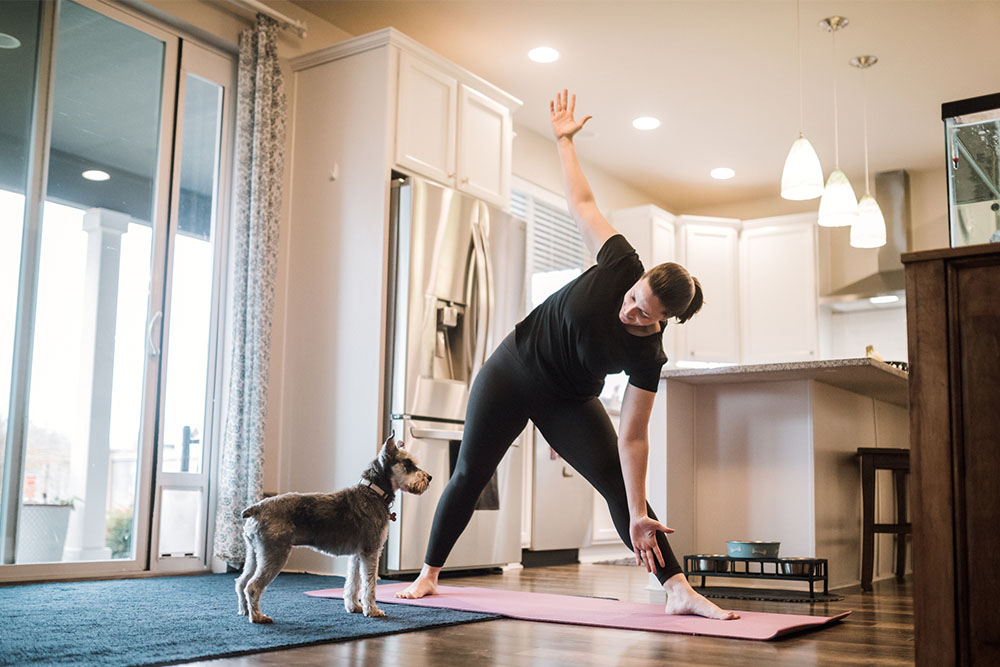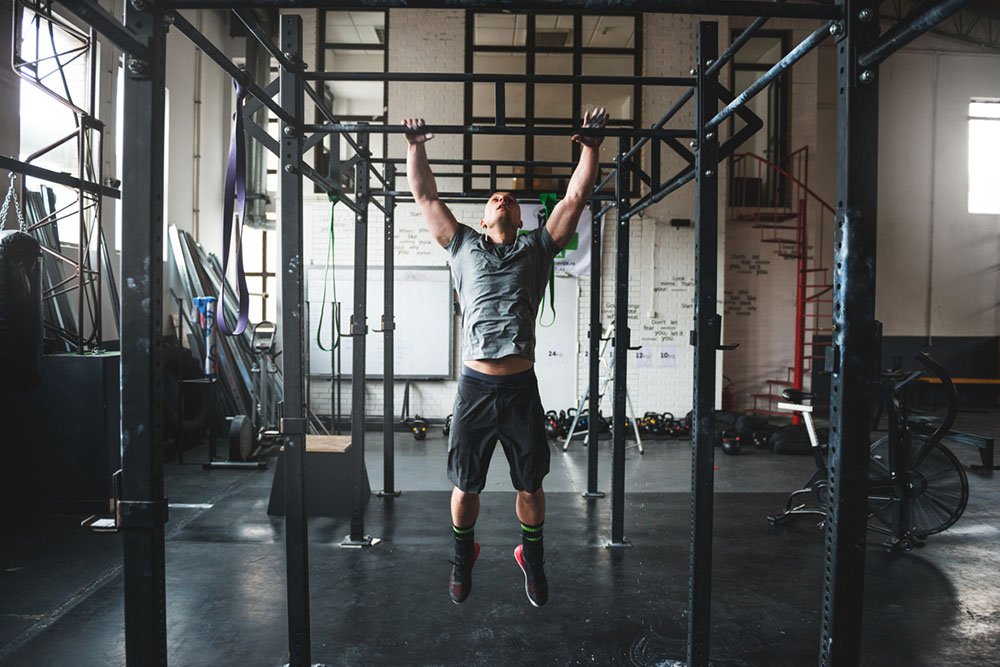How to Build Resiliency During A Pandemic

We are living through one of the most serious situations in modern history. This whole COVID-19 thing has turned the world as we know it upside down.
And we could not have been any more unprepared.
On both an individual and societal level, we are in a state of complete and utter disarray – so let’s make sure it never happens again.
What is a pandemic?
When it comes to the spread of disease, they can be classified as either an outbreak, an epidemic, or a pandemic.
An outbreak is simply an increase in cases of a certain disease above what is normally expected in a certain area. This increase in incidence associated with an outbreak is often sudden and unexpected.
Next up we have an epidemic.
Epidemics are very similar to outbreaks, but occur for people across a larger region. In this manner, the difference between an outbreak and a epidemic is simply the area in which they effect – where an epidemic affects a much larger area.
Finally, we have a pandemic.
A pandemic is an epidemic that is spread over several countries or continents, affecting a large percent of the population.
I should note that a pandemic does not necessarily indicate the severity of the disease, but rather its reach.
How often do pandemics occur?
The last time a pandemic was declared was only 11 years ago, when the World Health Organization (WHO) announced the H1N1 flu (also known as ‘swine’ flu) a pandemic.
But that isn’t to say that they come along every 11 years.
History tell us there have been 9 pandemics in the past 300 years – which equates to one occurring every 33 years, or three per century. Within this, I should state that the shortest gap between pandemics during this timeframe was 3 years, while the longest was 56 years.
While this means our ability to predict the when the next pandemic will occur is poor, it does suggest that there will most likely be another one in our lifetime.
Are any groups more susceptible to pandemics?
For influenza pandemics like the coronavirus, we have quickly established that certain individuals are much more susceptible to severe complications than others.
For example, the elderly, those who are obese, those with chronic conditions such as diabetes and cardiovascular disease, respiratory conditions such as coronary obstructive pulmonary disorder (COPD), and cancer, are much more likely to experience hospitalization and death in the face of respiratory viral infections.
But they aren’t actually any more susceptible to the disease.
In fact, here in the United States, there is only one group that appears to be at a markedly greater risk than all others. African Americans.
Terrifyingly, recent research on COVID-19 indicates that those of African American descent are approximately three times more likely to get the disease, and six times more likely to die from the disease, than Caucasians.
No that is not a typo – six times more likely.
While it is likely this comes down to several factors, one of the more obvious ones is because African Americans have higher rates of diabetes, heart disease and lung disease compared to the rest of the population. They also do not have as much access to medical care.
Combine that with the fact that they make up a significant part of the work force that does not have the capacity to work from home, and you have a recipe for disaster.
While there is little that can be done to address this right now, it does highlight just how unacceptable these disparities truly are – and something needs to change.
What is the importance of good hygiene?
Most pandemic diseases become pandemics because they are transferred easily between people. More often the than not, they can be transmitted through the air we breathe, and live on many of the surfaces we touch for days after we have touched them.
This means that good hygiene is imperative to stopping the spread of disease and infection.
Some of the most effective ways to practice good hygiene are:
- Cover coughs and sneezes
- Put used tissues into the bin immediately
- Wash your hands often with soap and water
- Use alcohol-based hand sanitizers (Alcohol-free hand rubs are often ineffective)
- Avoid touching your eyes, nose and mouth
- Clean and disinfect surfaces such as benchtops, desks and doorknobs often
- Disinfect frequently used objects such as mobile phones, keys, and wallets often
- Maintain good air flow by opening windows or adjusting air conditioning
Believe it or not, implementing these simple strategies can go a very long way when it comes to keeping yourself healthy.
Related Article: 3 Vitamins to Boost Your Immune System Now
The importance of being physically well during a pandemic
Something that we really need to state is the importance of keeping yourself in great physical shape during a pandemic.
In times like these, it is easy to fall into a state of despair. To let your physical and mental fitness fall by the wayside. To give up on everything – including your health.
But this is the worst thing you can do.
There is a large body of evidence clearly demonstrating that people who exercise more often are less likely to get ill than those who do not exercise at all – which obviously includes respiratory infections like influenza and coronavirus (Martin, 2009).
Moreover, there is an innate association between physical and mental health.
To put it simply, exercise has been shown to act has one of the most potent antidepressants on the planet. A single bout of exercise has been shown to stave off feelings of depression and anxiety, while people who regularly exercise tend to be less likely to suffer from mental health disorders.
More importantly, they also tend to report feeling happier and having greater self-esteem than non-exercises.
It should be apparent why taking the time focus on your health in a pandemic crisis is so important.
Correlation between health and illness complication rate
To add another layer to this story, it is important to note that your health state does not only impact your likelihood of getting a pandemic disease, but also its severity.
I alluded to this above, but I want to really hammer it home here.
People with poor health tend to have much worse outcomes if they contract the disease.
Using the rather topical case of coronavirus, it has become apparent that if those people with underlying health conditions get infected, they are going to be in some serious trouble.
What do I mean by serious trouble?
Well, there risk of complications increases significantly. This means they are more likely to experience severe breathlessness, severe fever, the transmission into pneumonia, and require hospitalization.
Moreover, their risk of death also increases in a big way.
While this is a truly terrifying thing to face, it does not mean that you should simply resign yourself to your fate. Instead, it should be used as motivation to take control of your health before the next pandemic hits.
Related Article: How Exercise Could Prevent Coronavirus
Survival of the fittest
I want to state that taking control of your health and fitness in pandemic can be done through a variety of different ways. In simple terms, making sure you hit the WHO physical activity guidelines would be a good place to start.
This means getting in at least 150 minutes of moderate intensity aerobic exercises, and two resistance training sessions, per week.
While this does not take a whole lot of effort, it is enough to bring you to baseline (so to speak). It will increase your health enough to stave off diabetes, cardiovascular disease, sarcopenia, and any severe age-related declines in function.
But I would argue that when faced with times like these, it will allow you to thrive.
I don’t know about you, but when the next pandemic hits, I want to be able to face anything that comes my way with ease. In short, if the world goes completely post-apocalyptic, I want to know that I will be at the top of the food chain.
This means that my training needs to be well above the recommended health guidelines.
It needs to not only build aerobic capacity, power, strength, and endurance, but also revolve around those functional movements that can improve my ability to perform tasks of daily living.
Improving my ability to run, jump, climb, and navigate the word around me with ease.
And this is where something like CrossFit enters the equation.
Survival training
CrossFit is an interesting mode of exercise that has you training to improve every aspect of your fitness in a functional manner. It revolves around movements that carryover to both tasks of daily living and athletic movements such as jumping, bounding, and sprinting (Smith, 2013).
In fact, they will improve your ability to perform tasks of daily living in nearly every scenario (Mallia, 2016).
Think about things like digging into the ground, pulling up vegetables, and chopping wood, or running across unstable ground, climbing over trees, and jumping over obstacles – it enhances your ability to do them all.
Not to mention that fact that CrossFit builds aerobic capacity and muscular endurance to such a degree that you can literally go from dusk until dawn without breaking a sweat.
So, in terms of everyday survival under any circumstance?
You could certainly make a case for CrossFit (or something very much like it).
To add to this, many of the training sessions used in CrossFit are challenging. In fact, the word challenging does not even come close to describing how tough some of their workouts truly are.
Now, this hold obvious importance for improving your physical fitness – but it has another important component that cannot go unsaid.
It also improves your mental resilience.
Your ability to carry on in the face of any obstacle. The ability to push yourself to your absolute limits, and then even further.
In short, it improves your ability to thrive under pressure in any situation.
And yes, that includes even the most extreme of pandemics.
Tips on building resilience
I wanted to finish this article with some things you can do right now to prepare physically and mentally and for the next challenge you face.
- Start aerobic training: this could be in the form of running, cycling, or simply walking. Just start doing something to build your aerobic base and build your health. Aim for 150 minutes per week, and then gradually increase intensity and duration.
- Commence strength training: start strength training 2-3 times per week, and make sure you use functional movements like squats, lunges, deadlifts, rows, push ups, and pull ups. Building strength in these movements will carryover to the real world like you would not believe.
- Challenge yourself: take the time each week to get out of your comfort zone and push yourself. Start building that mental resilience that will help you in any situation.
- Pay attention to your diet: finally, start eating better. Eat lots of sources of lean protein, heaps of vegetables, and avoid junk food where you can. It is this that provides the foundation of your health, so get on top of it.
There you have it – four very simple (albeit effective) steps you can take you make yourself more resilient in the face of future pandemics.
Related Article: Home Based Exercise Goals – Improve Your Fitness and Mental Fortitude
Take Home Message
The pandemic we are currently facing feels like something out of a science fiction movie. Something that could never really happen to us.
But it did.
And the scariest part?
It is highly likely that you will face another in your lifetime.
So, make sure you implement the steps listed in this article to take control of your physical and mental health and prepare for anything that comes your way – including the worst pandemic imaginable.
References
Martin, Stephen A., Brandt D. Pence, and Jeffrey A. Woods. “Exercise and respiratory tract viral infections.” Exercise and sport sciences reviews 37.4 (2009): 157.
Smith, Michael M., et al. “Crossfit-based high-intensity power training improves maximal aerobic fitness and body composition.” J Strength Cond Res 27.11 (2013): 3159-3172.
Mallia, Sharon. Retaining physical function in older adults: the crossfit® approach. MS thesis. University of Malta, 2016.
You Might Like:














